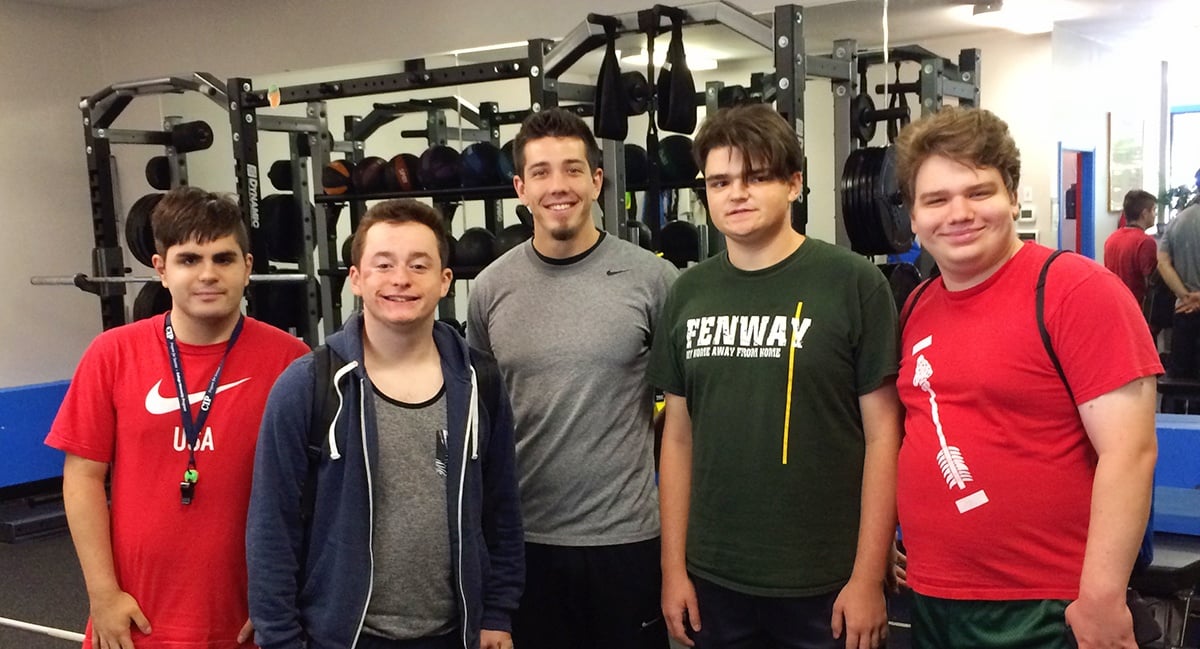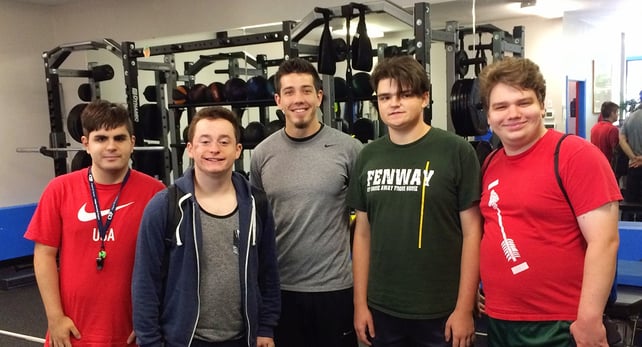
- Featured, Blog, Wellness
Healthy Routines for Students with Autism and Learning Differences

There is often a sense of excitement when we start something new, whether that be a job, relationship, or academic semester. It is important to take advantage of this excitement to harness new motivation, because for many, this is a limited window of opportunity!
As we get into the summer season, we want to make sure our students maintain their health and wellness and continue to integrate these activities into their daily or weekly routines. Studies in 1998 (Biddle), 2001 (Strauss), and 2006 (Pan and Frey) have shown that physical activity can promote self-esteem, increase general levels of happiness, and can lead to positive social outcomes -- all highly beneficial outcomes for individuals with autism and learning differences.
Now that we understand that all individuals alike can benefit from wellness-related activities, lets get started!
1. Eat Breakfast
When we skip our first meal of the day, our body has no fuel to draw on, including energy to get our metabolism started. We also tend to get hungry later in the evening which means snacking right before bed, a cardinal sin in the eyes of nutrition experts.
To ensure the day begins on a good note, stock the fridge with breakfast foods that are easy to prepare like whole-grain toast and peanut butter, yogurt, fruit, hard-boiled eggs, oatmeal, and low-sugar granola. If cold cereal is your breakfast of choice, try adding fresh berries to the mix.
2. Engage in Low- to Moderate-Intensity Physical Activity Everyday
This is much simpler than it sounds. Walk to a friend’s house. Bike through town. Take a ten-minute stretch break while studying.
Roommate not home? Put on some music and dance in the living room. Roommate home? Invite him or her to join you. Find a way to get the body moving at least 30-minutes a day.
3. Speak Up (and Let Go)
A tremendous amount of energy goes into keeping our feelings hidden and unexpressed. It is also an impossible task: our feelings will eventually rise to the surface, the resulting communication often unclear and resentful.
If we clearly and kindly express ourselves when something bothers us, we don’t have to hold onto it any more. We feel better, our relationships will likely improve, and life becomes noticeably easier.
4. Go Outside
The attraction of television, phones and computer games, and the intimidation of winters and other uncomfortable weather, makes staying inside an easy choice.
Challenge this by going outside and notice how you feel. Your mood, immune system, and vitamin D receptors will be very grateful. Give yourself reasons to get up and out like offering to walk a friend to school, walking to a cafe or library to study. Dress appropriately for the weather so that you can feel comfortable as you explore the outdoors.
5. Eat Different Foods
Our nutritional well-being is not thrown off by eating unhealthy food. It is thrown off by eating unhealthy food all the time. Our body responds best to variety - different types of foods provide different types of nutrients. We need a well-rounded diet to feel energized and balanced.
So if you find yourself cooking similar meals with similar ingredients, step out of your comfort zone and try to master a new recipe. A helpful tip: buy your fruits and vegetables from local sources. This way, the produce you buy will change with the seasons. Not only will your food taste great but you will have a natural change of menu throughout the year.
6. Engage in Vigorous Exercise Three Times a Week
Vigorous exercise is defined as getting the heart rate up for at least 20 minutes. To get started, have two things prepared: a plan and a partner. Find a friend with similar fitness goals, choose an activity that you are both interested in, and help motivate each other to exercise on a consistent basis.
Need help formulating a fitness routine? Check in with your wellness coordinator or another experienced professional. If that’s not an option, use this as a backup plan: choose 4-8 compound exercises targeting the chest, back, lower body, and core (push-ups, T-pose with low back extensions, squats, twisting crunches, etc.). See how many repetitions of each exercise you can do in one full minute before moving on to the next exercise. When you finish the entire set, rest for two minutes and repeat the entire circuit.
7. Surround Yourself with Good People
Choosing the right friends is one of the best things we can do for ourselves. Surround yourself with people who inspire you to be more yourself, and notice if you are around people who are asking you to be someone you are not. Are your relationships balanced? Do you receive appreciation and affection as much as you give it? Let your friends be an important gift you give to yourself.
8. Be Happy
Above all, make sure your happy. Everything on this resolution list should contribute to that. Laugh often. Be passionate and courageous. Life is very much a trial-and-error process. Through this process, find out what is most important to you, then go out and do it.
Oh, and never, ever take anything too seriously. Life is way too short for that!
About College Internship Program
The College Internship Program is a comprehensive transition program for young adults on the Autism Spectrum and with Learning Differences. Our Mission is to inspire independence and expand the foundation on which young adults with Autism, ADHD, and other Learning Differences can build happy and productive lives.
Related Articles
- CIP Announces the 2024 Winners of the Summer@CIP Video Contest
- Tailoring Fitness to Young Adults with Autism: A Guide to Enhanced Physical and Mental Well-Being
- Berkshire Eagle: Helping students with autism navigate the transition to independence
- How Social Determinants Affect Young Adults with Autism and LD
- Summer Sessions@CIP 2020 is a Success!